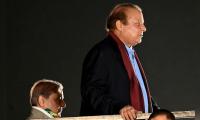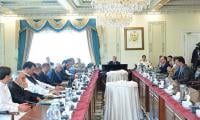ISLAMABAD: The World Bank on Thursday revealed that Pakistan’s expansionary fiscal policies and delayed monetary policy response led to economic overheating, further contributing to inflationary pressures in recent years.
“Domestic economic conditions and policy settings exacerbated inflation trends. Global financial market tightening as well as rising imbalances also contributed to a marked depreciation of the rupee, which further exacerbated inflationary pressures. More recently, energy prices increased rapidly as the government phased out subsidies and reduced energy tax exemptions, in an effort to contain the associated fiscal costs and curtail further accumulation of energy sector debt,” the WB’s report, Pakistan Development Outlook 2022 “Inflation and Poor”, revealed on Thursday.
It states that Pakistan experienced high rates of inflation recently as it went up to 27.3 percent for August 2022. This was driven by difficult external conditions, including rising global prices for food and energy, and domestic factors including an overheating economy and phasing out of energy price relief measures.
Going forward, inflationary pressures are likely to continue in the context of recent floods, which are expected to disrupt the supply of critical household and agricultural goods, disproportionately impacting the most vulnerable. Against the backdrop of floods andreduced agricultural production, disruptions to food processing and slaughtering, and disruptions to logistics have been placing upward pressures on local food prices. Accordingly, y-o-y increases in the Sensitive Price Indicator (SPI) for the lowest expenditure group exceeded 40 percent from mid-August to mid-September. Reduced exports combined with rising import demand may also drive further exchange rate depreciation, and higher prices for all imports.
The Household Integrated Economic Survey 2018–19 (HIES) reveals that households from the bottom of the income distribution spend more than two-thirds of their budget on food and housing and utilities. The households in the first decile (10 percent poorest households) allocate around half of their budget for food and non-alcoholic beverages. The top decile (10 percent richest households), in contrast, spends less than one third on food and non-alcoholic beverages.
Justice Tariq Mehmood Jahangiri took up Sher Afzal bail plea for hearing
CCP’s announcement made, stating that applicants are required to pay money upfront in order to enroll
According to details, the police took a van filled with female students of medical college to a police station on...
In this image, the logo of the Nowshera Press Club can be seen. — Facebook/Nowshera Press Club/FileNOWSHERA: The...
Senator Sherry Rehman said the PPP had previously extended an offer to the PTI to form a government, but the PTI is...
A division bench comprising Justice Shakeel Ahmad and Justice Dr Khurshid Iqbal heard the petition filed by the KP...







